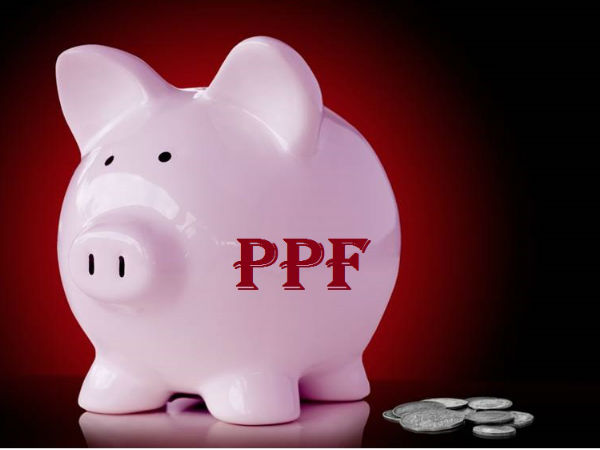Schemes Which Provide Maximum Tax-Exemption Benefits
Individuals pay tax on their yearly income. This is commonly referred to as Income Tax as per the layman’s language. In case if an individual earns income which is over and above the set limit of the
Individuals pay tax on their yearly income. This is commonly referred to as Income Tax as per the layman's language. In case if an individual earns income which is over and above the set limit of the income tax slabs then they have to pay a certain amount on their income as tax to the government on a yearly basis. There are various available options through which one can invest their money safely and can also receive the tax benefit for having invested in these schemes. This helps the individual in two ways - the first one being saving the money and the second one is to claim for exemption for income tax purpose.
Now let's take a sneak peek at the various tax-saving financial instruments available in India.
Some of the popular tax-savings instruments available in India are National Savings Certificate also known as NSC; Five-year tax savings fixed deposits, post office recurring deposit schemes, Senior Citizen's Savings Scheme (SCSS), and so on. These instruments provide saving options for the investor for a predetermined period of time and the interest amount will be added back to the income and thus it will be entirely taxed. Even though they help us to save the tax for the current year, the interest amount will be taxed every year till maturity period.
There are certain financial products which are currently available, which will help the investor to achieve both the goals of savings as well as tax-free income. They are as follows

Public Provident Fund
The Public Provident Fund Scheme (PPF) is a popular long-term investment option. It is backed by the Central Government of India. It is a savings-cum-tax-savings instrument, introduced by the National Savings Institute of the Ministry of Finance in 1968. The main aim of the scheme is to mobilize small savings by offering an investment with reasonable returns combined with income tax benefits.
The major advantage of the scheme is that the balance in the PPF account is not subject to attachment under any order or decree of the court. But the Income Tax and the government authorities can attach the account for recovering tax dues if any.

Features of Public Provident Fund
• An individual can voluntarily open an account with any nationalized bank or post office or in the authorized private bank.
• The account can also be opened in the name of a minor.
• Lock in period is 15 years.
• The account can be opened with a minimum deposit of Rs 500 per annum.
• The current rate of interest is 7.6% per annum.
• The maximum amount of Rs 1,50,000 can be deposited per year.
• Loan facility can be availed between third to sixth financial year.
• Deposits can be made through the maximum of 12 transactions.
• Partial withdrawal facility can be availed from the seventh financial year onwards.
• The account can be extended in a block period of five years post maturity.
• Nomination facility is available.
• Premature closure of an account is permitted after completion of five years in case of financial emergency arising due to the medical treatment of a family member or for higher education purpose.
• The premature closure comes with an interest rate penalty of 1%.
• Transfer of account from one branch to other branch or other banks or post offices and vice versa is available after obtaining a request letter from the subscriber.

Tax Concession
• Contribution towards PPF account is eligible for tax benefit under Section 80C of the Income Tax Act.
• Annual contributions qualify for tax deductions under Section 80C of Income Tax.
• The tax benefit is capped at Rs 1,50,000 per annum.
• Contributions made towards PPF accounts of the spouse and children are also eligible for tax deduction.
• PPF falls under exempt, exempt, exempt (EEE) tax basket.
• Maturity amount and Interest amount earned under PPF Scheme is exempt from income tax.

Employees’ Provident Fund
Employees' Provident Fund popularly known as EPF is a scheme aimed to build retirement savings for employees.
The EPF is a corpus built by an employee and his or her employer together through regular, monthly contributions till the tenure of the employment. The fund is maintained by the Employees' Provident Fund Organization in India (EPFO).
Any company which has more than 20 employees are eligible to register with the EPFO. If a company has less than 20 employees, then as per the EPFO rules, the contribution rate for both the employees and employer is limited to 10 percent.
Under the EPF Scheme, an employee has to pay a certain contribution towards the scheme and an equal contribution has to be made by the employer.
The employee will receive the lump sum amount which includes both self and employer's contribution along with the accumulated interest on both at the time of retirement.
The contribution made by the employer is 12% of basic wages which includes dearness allowance. A matching contribution is payable by the employee as well.
According to the rules of EPF, the employee whose pay is less than Rs 15,000 per month have to mandatorily become members of EPF.

Features of EPF Scheme
• It is a contributory scheme.
• Both the employee and employer deposit part of the salary towards the scheme.
• The contribution is made on a monthly basis.
• The interest rate of EPF is fixed on a yearly basis.
• The interest rate is linked to the 10-year yield of the government bond.
• The employee will be eligible to receive total PF balance along with the interest at the time of retirement.
• An employee can track and check the EPF balance against his/her EPF account.
• Every EPF account has a unique UAN number and EPF number ID created at the time of first employment.
• The UAN number does not change with the change of job.
• The portable number helps the employee to transfer the PF balance at the time of changing the job.
• The PF member ID changes with every job, it is assigned by the employer.
• An employee can withdraw the EPF balance amount before retirement or if the individual remains unemployed for more than a period of two months.
• EPF member cannot withdraw 100% of EPF corpus before retirement age.
• Loan facility on EPF is available.
• During retirement, the employee receives a lump sum amount of accumulated EPF.

Tax Concession
• Employees contribution towards EPF is eligible for tax deduction under Section 80C of Income Tax Act.
• Contribution by the employer is also eligible for tax exemption.
• The maturity along with interest amount is eligible for tax exemption.
• Tax benefits are subject to a minimum of 5 years of service in a particular organization.
• EPF withdrawal before five years of continuous service is subject to TDS (Tax Deducted at Source).
• EPF falls under exempt, exempt, exempt (EEE) tax basket.

Unit Linked Insurance Plans
The Unit Linked Insurance Plan is a product offered by the insurance companies that, unlike a pure insurance policy, give investors both the insurance and investment benefits under a single integrated plan. It is popularly known as ULIP.
A portion of the premium paid by the policyholder is utilized to provide insurance coverage to the policyholder and the remaining portion is invested in equity and debt instruments.
Each policyholder can select a personalized investment mix after considering personal investment needs and risk factors. The aggregate premiums collected will be pooled and invested in varying proportions of debt and equity securities in a similar manner to mutual funds.
Just like a mutual fund, each policyholder's ULIP's hold a certain number of fund units, each of which has its own net asset value (NAV) which will be declared on a daily basis. The NAV is the value upon which the net rates of return on ULIP's are determined. NAV varies from one ULIP to another based on the performance of the fund and the market conditions.

Features of ULIP's
• It provides twin benefits of life insurance and savings at market-linked returns.
• A portion of the premium amount is used towards mortality charges that are used for providing life cover.
• The remaining portion is used for investing in funds of policyholder's choice.
• Invested funds will fetch returns based on the market linked returns.
• Special features such as top-up facilities are available for the policyholders.
• Policyholders can switch between various funds during the tenure of the policy.
• The holder can reduce or increase the level of the protection cover.
• Option to surrender the policy is available.
• Additional rider options to enhance the coverage returns, as well as tax benefits, is available.
• The investor can invest the money to fetch high returns on investment, at the same time he/she can take the cover for life insurance and save money.

Tax Concession
• The investors in ULIP's are eligible for tax benefit up to a maximum limit of Rs 1,50,000 per annum under Section 80C of the Income Tax Act.
• Maturity amount realized from ULIP's are exempt from Income Tax-Exemption.
• There is a caveat which states that the sum assured or the minimum death benefit must be at least 10 times the annual premium amount. If this condition is not met, then the benefit under Section 80C shall be capped at 10% of the sum assured while the maturity proceeds will not be exempt from income tax.
• ULIP's falls under exempt, exempt, exempt (EEE) tax basket.


Equity Linked Savings Schemes
The Equity Linked Savings Scheme is an open-ended, diversified equity scheme offered by mutual funds in India. It is popularly known as ELSS.
They are saving or investment schemes which invest majority in the equity assets. They can be invested using both Systematic Investment Plan (SIP) and lump sums investment options.
The Equity Linked Savings Schemes in India are offered by almost every existing mutual fund company. They are popularly called as Tax saving mutual funds.
It has better liquidity option compared to other financial schemes and has a lock-in period of 3 years. It is considered as one of the best tax saving instruments.

Features of ELSS
• They are basically a diversified equity mutual funds and hence most of the ELSS schemes invest in diversified equities which include large cap, medium cap, and small cap.
• It has a lock-in period of 3 years.
• After three years an investor can withdraw the invested amount from ELSS.
• It has both growth schemes and dividend schemes.
• Investors have the option to earn regular income during lock-in period, by opting for dividend scheme under ELSS.
• Investors will receive lump sum amount after the lock-in period under the growth scheme.
• Returns from ELSS is linked to the performance of the equity markets.
• It has given highest returns from amongst the tax saving investment options currently available in the market.
• One can invest in ELSS either through online or offline mode.
• It provides great flexibility for investment as it can either be done at one time (lump sum) or through systematic investment plan (SIP).
• One can invest a minimum amount of Rs 500 per month.
• There is no maximum limit on the investment amount.
• ELSS funds do not have either entry or exit load.
• Expense ration of top ELSS fund varies from 2% to 3%.
• It is the best equity investment option for a long-term period. As in long-term, equities outperform other investment options.

Tax Concession
- The investors of ELSS are eligible for tax exemption under Section 80C of the Income Tax Act 1961.
- Investment amount of up to Rs 1,50,000 is eligible for tax exemption.
- Tax is not levied on the returns earned from the equity-linked savings scheme.
- Capital gains and dividends are tax free.































